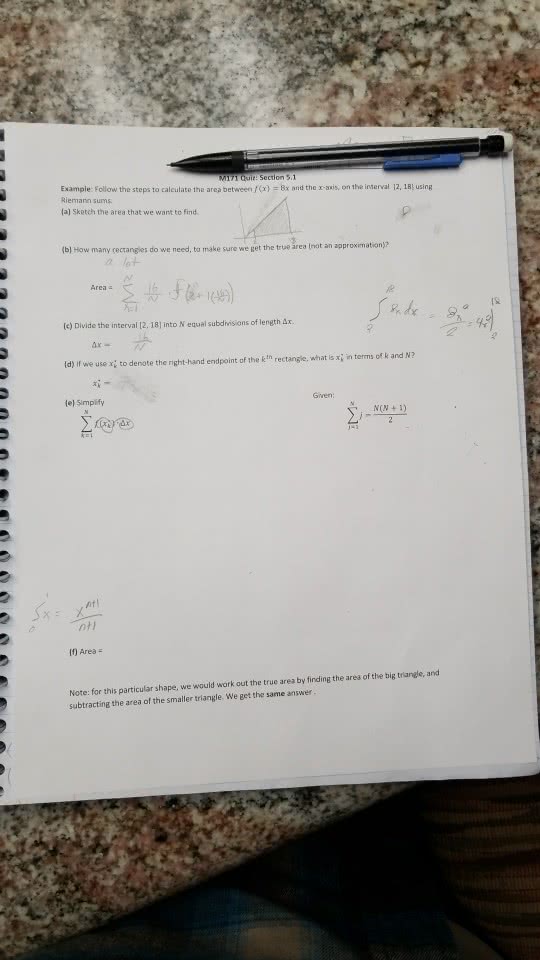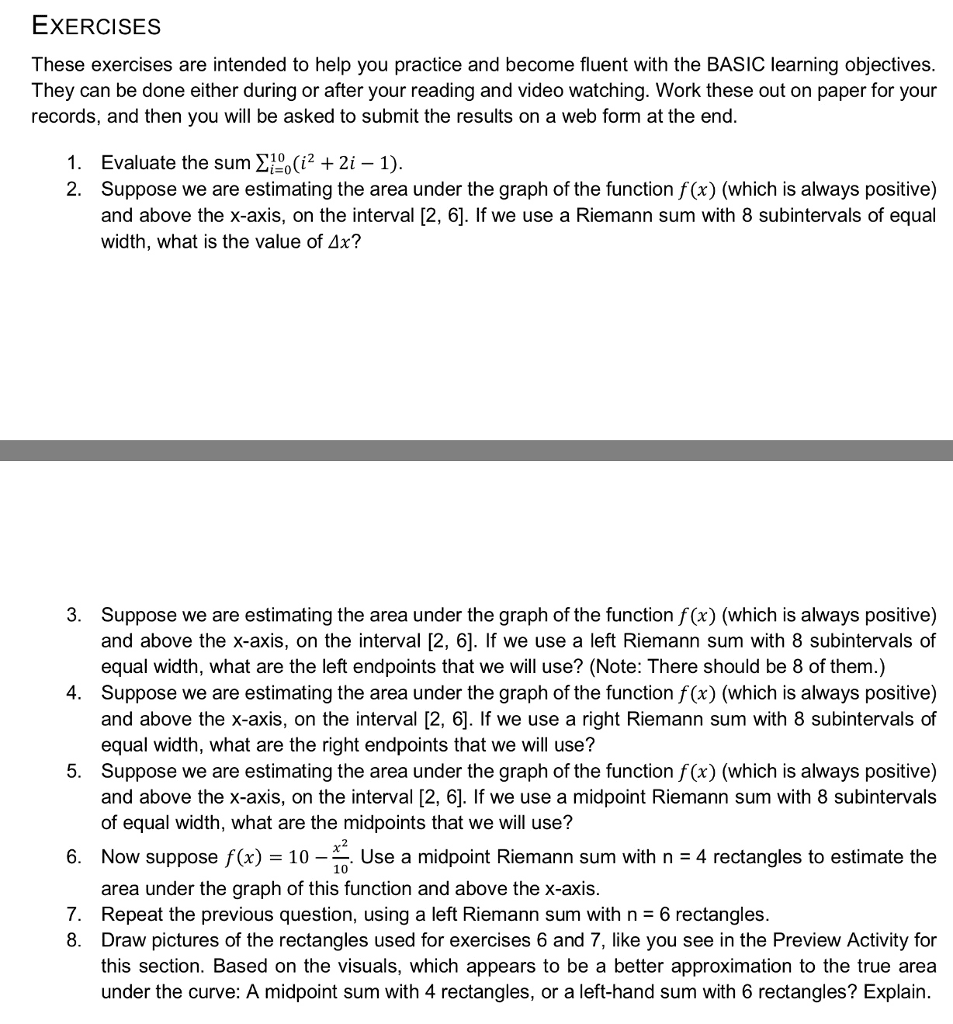MATH0801 Study Guide - Final Guide: Parallelogram, Tachykinin Receptor 1, Summation
Document Summary
We have nice formulas for calculating the area of a circle, rectangle, parallelogram, triangle, etc. We can approximate this area by the sum of the areas of the five rectangles with width 1 and height f x evaluated at x=1,2,3,4,5 . This is not a great approximation, however if we use the ten rectangles of width. The more rectangles we take, the better the approximation is. Notice that our estimates in the last example were too large. These are called upper estimates we could have estimated the area by using lower estimates: We also could have used rectangles whose heights are f x evaluated at the midpoint of each interval. Sigma notation enables us to write a sum with many terms in a compact form. n k=1 ak. Remark: n n c a k c k=1 k=1 n k=1. Some helpful formulas: n n n k k 2 k 3 k=1 k=1 k=1.



